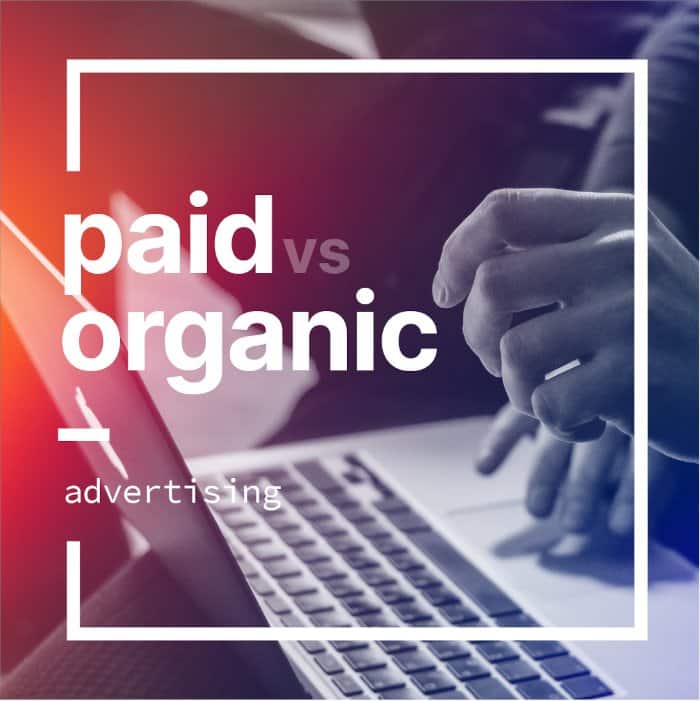What Are They & Which One is Right for You?
By Maddy Coast
You know you want your social feeds to connect with your audience by letting them hear your voice, and you know you want to do that in a way that also builds trust and acts as a natural extension of your existing website. You want the people who are already following you to engage and interact.
But you also want new friends to smash that ‘follow’ button. You want to dodge various algorithmic whims and make sure you’re getting your message in front of as many people as possible. You have a pretty good idea of who you’d like to be talking to right now.
So, the question: should you focus your efforts on organic social or paid social?
Short answer: yes.
Before we go too much further, let’s take a sec to make sure we’re on the same page about the difference between organic and paid social strategies. It’s pretty simple. In this context, “organic” essentially means “free,” whereas “paid,” as you’ve probably guessed, means that there’s some money being spent. Organic social posts appear in the feeds of people who already follow you, and especially well-crafted ones will take on a life of their own as your audience likes them, shares them far and wide, and creates an ongoing dialogue in the comments.
The reason you pay for paid social posts, though, is that you want them to show up in the feeds of an audience you decide to target. The more detailed information you have about your ideal audience’s demographics, location, interests, spending habits, and clicking habits, the more precise your aim.

Organic and paid social posts each come with a set of unique best practices, too. Organic social posts are not the right place to deploy urgent calls to action or tap into FOMO-fueled “on sale for one day only!” urgency. Instead, your organic social posts should inspire, engage, educate, and (gently) promote. Sure, offer a deal or followers-only discount here and there, but mostly the goal of organic social is to give your audience the chance to know you. This is where you show off your personality, your sense of humor, your individuality. What do you want people to know about what drives you, what makes you tick, what you truly value? This is where you get to show that, and when you do it with a light touch, it doesn’t have to feel strictly transactional.
Which is not to suggest that paid content has to feel “strictly transactional” or more impersonal. But these posts do have an agenda. This is where you tell people exactly what you want them to do next, whether that’s following a link, downloading a value-packed informational PDF, signing up for your email list, making a purchase, or any other specific action.
It’s okay for organic social posts to be on the long side; you want these to feel like an invitation to a conversation, or like an offering –– you’re giving your followers something of value. With paid social, though, it’s usually best to keep things short and sweet. Make your point and make it quickly. If you’re incorporating video here –– good idea! –– a tight 30 seconds, tops, is all you need.
Another advantage of organic social posts is that they’re a great low-stakes way to try out different options and gauge engagement. Paid organic is where you’ll really want to bring all of your analytical tools to bear. Always be testing. Taking a hard look at your metrics will help you refine your approach and zero in even further on your dream demo.
Now some numbers: 55% of consumers learn about new brands via social media, and in the last year alone (a year that found many of us living extremely online), 43% increased their social media usage with the purpose of discovering new brands. A solid 58% of people say they visit a brand’s social pages before visiting their website –– an 81% increase from the previous year.
So let’s circle back (sorry) to the original question: should you devote your resources to organic social, or paid?
The answer, of course, is both. The most successful social strategy isn’t necessarily about drawing a hard line between organic and paid. Like almost everything else in the digital marketing world, the best approach is a hybrid. It’s entirely possible to bolster your brand’s reputation, foster a sense of community, and welcome new followers while still implementing effective calls to action that attract leads, conversions, and sales. It’s about knowing who you are, what you want to say, and who you want to say it to –– and where and when.
Sources: https://sproutsocial.com/insights/data/harris-insights-report/
https://sproutsocial.com/insights/importance-of-social-media-marketing-in-business/



